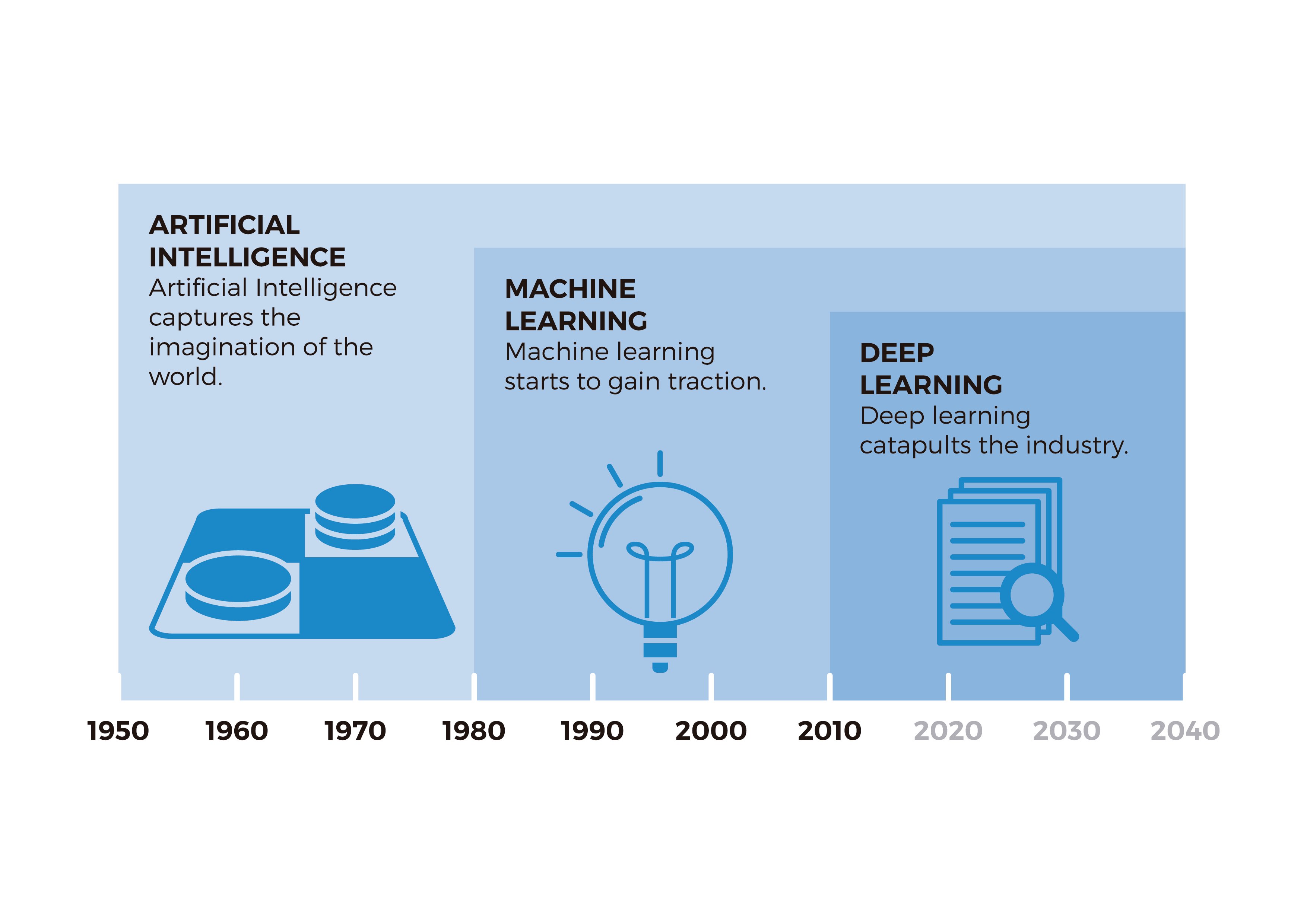We explore the role of test automation in business and review the 6 things to consider when applying machine learning and AI for test automation.
More and more companies are taking advantage of artificial intelligence and machine learning to perform test automation tasks. Automating the testing process and quality testing means significant savings in time and money. However, there are certain issues to consider when applying machine learning and AI for test automation. We review the 6 aspects to consider when applying machine learning and artificial intelligence for test automation.

Artificial intelligence (AI) is a concept that envisages the creation of machines capable of performing human tasks. Machine learning is a subset of AI that allows machines to learn for themselves from data.
AI is concerned with creating intelligent machines to perform tasks that would normally require human intelligence. Thus, machine learning was born when humans found it is more productive to teach machines to learn on their own from the information they collect rather than programming them to perform tasks.
What is machine learning?
Machine learning is a subfield of artificial intelligence (AI) that focuses on the development of algorithms and statistical models that enable computers to learn from and make predictions or decisions based on data without being explicitly programmed. The primary goal of machine learning is to allow computers to learn from past experiences (data) and improve their performance over time without human intervention.
In traditional programming, developers write explicit rules and instructions for the computer to follow. However, in machine learning, instead of programming explicit rules, the computer learns patterns and relationships from data to make predictions or decisions. This process is known as "training" the model.

Types of machine learning: Supervised, Unsupervised and Reinforcement
Broadly speaking, there are three different types of machine learning:
-
Supervised Machine Learning: In supervised machine learning, the algorithm is trained on a labeled dataset, where the input data and the corresponding correct output are provided. The goal is for the model to learn a mapping between input features and output labels, enabling it to make accurate predictions on new, unseen data. Examples of supervised learning tasks include image classification, regression, and natural language processing (NLP).
-
Unsupervised Machine Learning: Unsupervised learning involves training the machine learning algorithm on an unlabeled dataset, where the model learns patterns and relationships within the data without explicit guidance on the output. The goal of unsupervised learning is to discover hidden structures or groupings in the data. Clustering and dimensionality reduction are common unsupervised learning tasks.
-
Reinforcement Learning: Reinforcement learning is a type of machine learning where an agent interacts with an environment to achieve a goal. The agent receives feedback in the form of rewards or penalties based on its actions. The goal of reinforcement learning is for the agent to learn the optimal strategy or policy that maximizes the cumulative reward over time.
Machine learning algorithms can vary in complexity, from simple linear regression models to more sophisticated deep learning models, such as artificial neural networks. Deep learning, a subset of machine learning, is particularly powerful for handling complex and high-dimensional data, such as images, speech, and natural language.
How do machine learning algorithms work?
Machine learning algorithms learn from data examples, adjusting their internal parameters to make accurate predictions during a training phase. They identify patterns and correlations in the data to improve their understanding of the task. Once trained, they can make predictions on new, unseen data. Their performance is evaluated using a test set to ensure they generalize well to different situations. This ability to learn from data and adapt makes them powerful tools in various applications like image recognition, language processing, and more.
- Find out everything you need to know about machine learning algorithms: "How Do Machine Learning Algorithms Work?"
The development of neural networks made it easier to code machines to think and understand like humans. When you plug them into the internet, they gain access to all the information in the world.
Today, machine learning is used, among other things, to automate testing processes.
Machine learning for test automation
Machine learning is creating a strong impact on software testing. The process of a software tester is either manual or automated. Manual testers find it difficult to work on the same process and review documents constantly.
Many testers and QA teams are incorporating test automation in their companies. Machine learning is benefitting manual testers by simplifying their tasks. This helps companies produce higher quality and quantity of work in a shorter time.
Hence, it is important for manual testers to learn automation testing. This method of testing helps save time and money. It also helps increase test coverage, improve the accuracy, and morale of the QA team. Through automation testing, developers and testers get the opportunity to work as a team. In short, automation does the job better than manual testing.
However, there are certain things to consider in test automation while applying artificial intelligence (AI) and machine learning.
6 Things to Consider When Applying Machine Learning & AI in Test Automation
1. Visual Testing (UI)
Visual testing is a quality assurance activity of software developers. They evaluate whether the application appears and performs the way it was intended for the end-user. It is important to know the kinds of patterns machine learning can recognize.
Manual inspectors can better distinguish flaws, whether it is subtle, cosmetic, or functional. A traditional machine vision system may require a serious inspection while reading complex surface textures and image quality.
A deep learning tool or system is, therefore, better suited for visual inspection of web or mobile applications. It provides rapid and accurate results. At times where human involvement might be considered risky, developers can rely on this system. By creating a simple machine learning test, developers can automatically detect visual bugs and avoid manual work.
2. API Testing
Application Programming Interface (API Testing) is a type of software testing that enables communication and data exchange between two software systems. The advantage of API testing is that it can pinpoint application defects better than UI testing. It is easier to look at the code when the test fails. It can also resist application change which makes it easier to automate.
While testing at the API level, you need a higher degree of technical expertise and tools to get comprehensive test coverage. Along with this, software testers must have the required domain knowledge. Therefore, it is important to consider whether testers have intimate knowledge of different application interfaces.
Through AI, you can convert manual UI tests into automated API tests which take care of all the heavy lifting work. As a beginner, you will be able to map out the activities performed in the UI to API tests.
3. Domain Knowledge
Having domain expertise is crucial in software testing. Whether it is manual or automated testing, with artificial intelligence you can test the applications better.
For example, writing test scripts in codes using Java, Python, C# can be challenging. In automated testing, advanced tools help testers develop codes and test scripts. With AI, machines can write flawless codes themselves. At the same time, manual tests are preferred to handle complex test cases. With enough domain knowledge, you would know when to perform manual or automated tests to run test cases.
While applying AI in test automation, it is important to know how the application will perform and benefit the organization. While running test automation, you can expect failure in results most of the time. It must be convenient for QA teams to scale the defect in the application, whether trivial, significant, or critical.
4. Spidering AI
The most popular approach to writing test scripts in test automation is done through spidering. It has a feature through which you can point at your web application using AI/ML tools. It then begins to crawl over the application automatically by scanning and collecting data.
Over time, the tools build a dataset and create patterns for your application while running tests. The next time when you run this tool, it points out potential issues by taking references from its dataset containing patterns and behavior.
However, keep in mind that some of the differences might not be valid. In this case, an expert with domain knowledge will have to confirm whether the issue flagged by ML is a bug or not.
Spidering AI will be helpful in understanding which parts of an application should be tested. To put it simply, machine learning will carry out heavy tasks and a tester will have to validate the accuracy of the results.
5. Test Scripts
Software testers will find it difficult to determine the number of tests required when a code has been altered. The automated testing tools based on artificial intelligence predict whether an application requires multiple tests or not.
There are two benefits of running tests using AI. You can stop running tests unnecessarily and save more time. It is convenient to analyze the overall performance of a system without repeating the test scripts. Hence, you do not have to monitor it every time manually.
6. Robotic Test Automation (RPA)
Robotic process automation (RPA) refers to a software that performs repetitive business processes without any human interaction.
It helps in automating existing interfaces in IT systems and maintains them completely. RPA scans the screen, navigates the systems, and later identifies and gathers data.
The tasks are performed solely by the bots and the tests can be done using the web, desktop, or mobile applications. It helps set up test data and run regression tests.
Many companies are surely taking RPA testing initiatives. However, RPA powers business testing which can affect the amount of testing done by the testers.
The main advantages of RPA are: scalability, codeless testing, cost savings, increased productivity, accurate results and flexibility.
Almost half of the test procedures can be automated using artificial intelligence. Testers can make use of machine learning to teach systems to detect errors that may go undetected using manual testing.
By using AI in your test automation, you can achieve accurate results in a shorter time. You can save time as AI takes care of most of the test process.
However, you must understand the business process, test scenarios, test scripts, and how to run the tests using artificial intelligence. Before you apply AI and ML in test automation, you must certainly know how your company can benefit from using the tools.
Exclusively written for bismart.com. Prepared by Daniel Martin | Daniel Martin loves building winning content teams. Over the past few years, he has built high-performance teams that have produced engaging content enjoyed by millions of users.Dani also enjoys photography and playing the carrom board.



